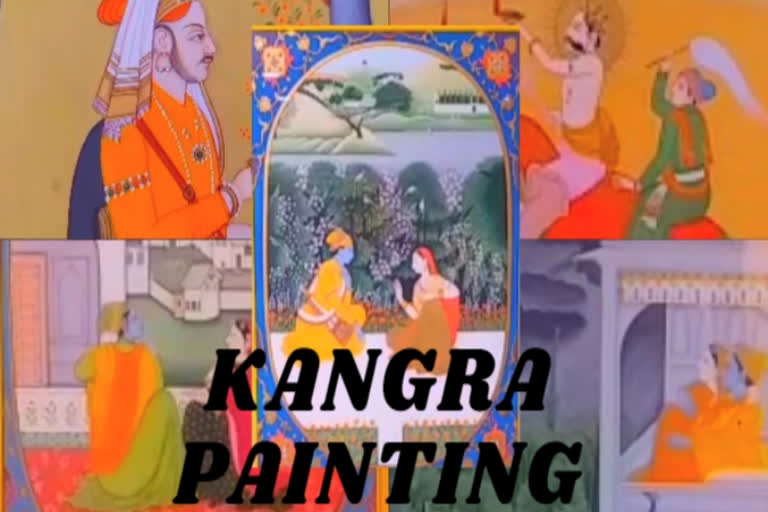Kangra: Kangra painting is the pictorial art which contributes to the unique heritage and culture of Himachal Pradesh. The beautiful art form is being cherished for ages.
The most attractive feature of this art form is that the colours used in Kangra paintings are all-natural which are extracted from leaves, stones, mud, seeds, flowers and herbs. It is specifically made with the help of brush made of squirrel hair.
The painting style became prevalent in the 18 century and it was developed in Kangra district's Guler area. This art form is also known as Guler painting as a family of Mughal artist from Kashmir was given shelter by Raja Dalip Singh in his princely state of Guler (1695–1741) and with passing time the Kangra art grew across the area.
Read:| This Kannur man is turning leaves into an art
In the 17-19 centuries, the Rajput emperors worked towards the development of this art form. Guler, Basohli, Chamba, Noorpur, Bilaspur and Kangra are some of the places where Kangra painting emerged. Later this style was also adopted in Mandi, Suket, Kullu, Arki, Nalagarh and Garhwal.
Earlier, Kangra artists use to paint flat portraits of kings and paintings depicting love story of Lord Krishna and Radha.
Indian painter Mola Ram has given his unconditional contribution towards the development of this art in Kangra Kalam area of Garhwal. Kangra School of Painting has been continuously working towards the upliftment and renovation of this art form which is also known as Pahari painting.
To make the painting, the paper is first coated with white material and then it is smoothened with a conch to give it a shiny surface. This process makes the paper strong and durable.
Read:| Dashavatar Taash fusions with glass lantern to add feather to Bengal's rich art
The natural colours made from the extracts of flowers, leaves, roots, soil, herbs and seeds are kept in clay cups or large oysters. The main theme of Kangra painting is makeup which gives it a distinct identity in the world of art.
Speaking to ETV Bharat, Mukesh Dhiman, a Kangra artist, said that he has been into the profession for the past 32 years. Talking about the time spent in making one painting, he revealed that this work is very minute and it takes a minimum of 10 days to make a Kangra painting.
Emphasising towards the revival of this art form, he said that there is a need to cherish this art and it should be taught in schools so that the coming generations can channelise their talent and skills towards its growth.



